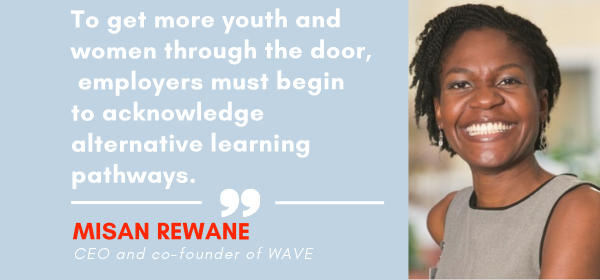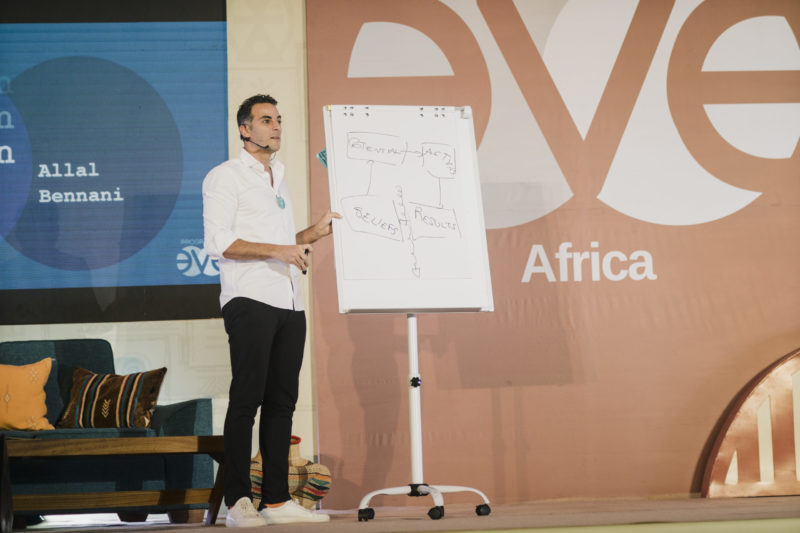World poverty could be cut in half if all adults completed quality secondary education. There has been progress: more people in the world are leading better lives and working, but these improvements have vaulted over low-income countries, which still grapple with high unemployment rates, increasing the possibility that they continue to be left behind.
Fighting poverty in low-income countries requires a new approach. Youth and women are essential to achieving equal access to education, gender equality and decent work. The solution to high unemployment lies within these demographics.
Behind the Curve
Education and gender equality, two fundamental elements for reducing poverty, face significant challenges in low-income countries:
Despite increases in school enrollment, low-income countries account for 24% of the world’s out-of-school children, adolescents, and youth, even though they constitute just 13% of the global school-age population. Tertiary education shows even worse numbers: worldwide, 38% of youth worldwide make it to a tertiary institution. In low-income countries this figure goes down to 9% and it’s even lower for university-age females: only 7% enroll for tertiary education, compared with 11% of university-age males. Compounding the problem, most youths who are able to acquire a tertiary degree find it lacking, since the programs often fail to develop the 21st-century global competencies young graduates need to navigate and succeed in the work environment.
Employers, however, continue to hire talent based on their academic credentials, especially when recruiting for formal sector jobs. These hiring practices exclude a pool of “unqualified” yet competent candidates who have acquired the required skills through informal work, skill acquisition programs and other means.
With employers focusing on academic credentials, the vast majority of youth and women in low-income countries cannot secure higher-wage jobs. Consequently, the rate of working poverty for youth far outstrips that of adults. Young women are more deeply affected by this than young men as they have more obstacles to overcome. Most cultures, for instance, assign traditional gender roles to young women, having them shoulder the lion’s share of domestic and family care responsibilities, which prevent many of them from working outside the home. Poor security, limited and ailing infrastructure and few transportation options coalesce into personal safety concerns for commuting women, which makes working late or early hours a challenge. Young women also have to contend with ingrained cultural biases in the workplace. Many are relegated to low-paying jobs as a consequence of this bias. Due to these factors, financial autonomy, social mobility, and self-determination are beyond the reach of many youth and women.
Creating Better Education and Work Opportunities
To get more youth and women through the door, employers must begin to acknowledge alternative learning pathways. This means focusing on skills and not on academic qualifications when hiring. Multinationals like Google, Apple, Ernst & Young, and IBM now hire candidates with non-conventional technical training and practical work experience.
Such a focus would directly target youth unemployment in low-income countries by giving more young people the opportunity to work. Another advantage would be encouraging institutions to modernize their programs in order to produce graduates with in-demand skills.
Educators in low-income countries could overhaul curricula at the secondary and tertiary levels by developing more holistic skill acquisition programs that help create a more employable workforce. Soft skills development should be added to curricula, as communication, critical thinking, adaptability and the like, are just as critical to work-readiness as technical skills.
Education institutions must also emphasize practical training by collaborating with industries and companies to provide internships and other work placement programs.
Employers must also institute blind hiring practices, as these competency-based methods have been proven to diversify the workforce. A Princeton study found that the introduction of blind tests, where musicians auditioned behind a screen that concealed their identity, helped to almost quadruple the number of female orchestra members in major US orchestras in a span of two decades. Female players were 50% more likely to advance beyond preliminary rounds and their chances of ultimately being selected increased manifold, despite the field’s high competitiveness. All of this was achieved by simply focusing on competency. Such neutral recruitment processes will help bring more women into the workplace in low-income countries.
Keeping youth and women working should be the next priority. Employers should therefore reinforce their revamped hiring practices with training around unconscious bias and discrimination within talent management in order to level the playing field for youth and women in the workplace. Other measures would include flexible work arrangements and parental leave to make long-term work more viable for both groups, while providing study leave for employees without credentials and incorporating critical skills development into career paths. This will foster a greater sense of belonging, loyalty, and ownership among employees, helping to increase performance and retention rates.
The Final Piece: Youth and Women
Youth and women must take charge of their own skills development by gauging the labor market and pursuing training for high-demand skills. This will help them position themselves to increase their earning potential and accelerate their careers
Increasing their participation in the workforce, however, does not begin with them. It requires a multipronged approach by all stakeholders, one that equips youth and women with the right skills to participate in the labor market while rethinking and modernizing the systems on which the labor market depends.
Youth and women can be effective agents of economic growth who help steer their countries towards the global wave of improving lives. We just need to give them the opportunity to do so.
 Misan Rewane is the CEO and co-founder of WAVE.
Misan Rewane is the CEO and co-founder of WAVE.
Born and raised in Lagos, Nigeria, Misan is no stranger to the challenges of education and social mobility. When her parents, unable to ignore the education system’s breakdown, were compelled to send her to the U.S. for university, she resolved to help transform the region’s education system. After graduating from Stanford University, she worked with The Monitor Group, TechnoServe, and the Centre for Public Policy Alternatives. As an MBA candidate at Harvard Business School, she partnered with fellow West Africans who were passionate about tackling youth unemployment and launched WAVE in 2013.
WAVE tackles youth unemployment by identifying motivated but underserved West African youth, training them on crucial employability skills, and connecting them to entry-level job opportunities. Since its launch, WAVE (now a team of 40) has graduated over 2000 young people across its academies, matched over 1,000 of them directly to entry-level jobs with over 300 businesses and has trained thousands more across its various partnerships with public and social sector organizations. By turning motivated young talent into reliable human capital for local businesses, WAVE inspires positive change in employer attitudes, creating a fairer and more inclusive labour market.
Follow Misan on Twitter! @misanrewane @waveacademies






